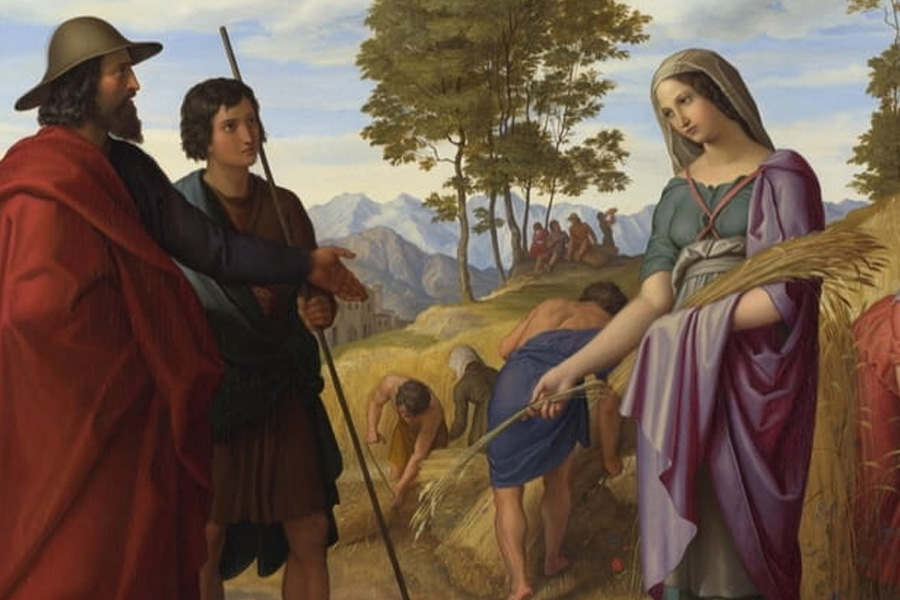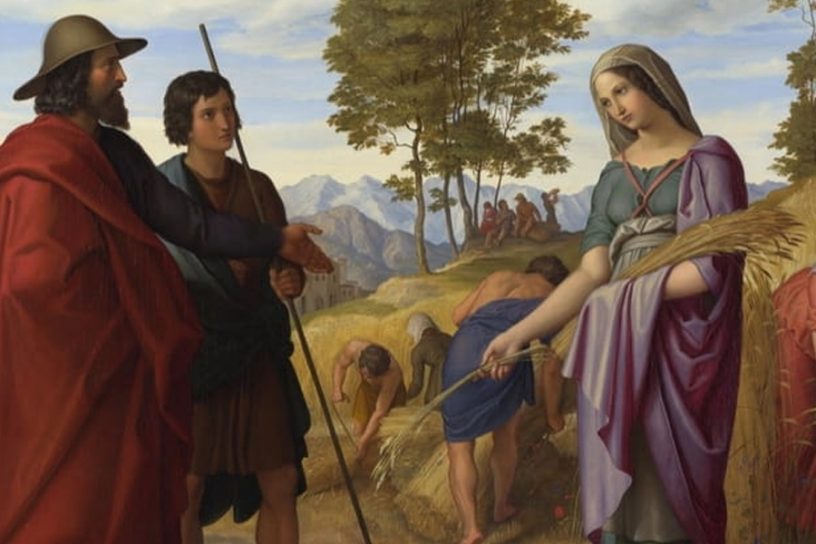
While in the canvases of painters such as Pieter Lastman and Jan Victors Ruth is depicted as a model of religious identification, in the paintings of Joseph Anton Koch and Francesco Hayez she epitomises “oriental” otherness, says the author.
Author
Achia Anzi, Assistant Professor, Jindal School of Liberal Arts and Humanities, O.P. Jindal Global University, Sonipat, Haryana, India.
Summary
My article examines various artworks from Europe and Israel that portray and are inspired by the Book of Ruth. While in Jewish sources such as the Talmud (Yevamot 47b) Ruth is seen as an immigrant and a convert to Judaism, European artists since the seventeenth century highlighted different episodes and aspects of the biblical story that suited their social, political, and religious worldviews.
Notably, the expansion of colonialism during the nineteenth century transformed the depictions of Ruth. While in the canvases of painters such as Pieter Lastman and Jan Victors, Ruth is depicted as a model of religious identification, in the paintings of Joseph Anton Koch and Francesco Hayez she epitomises “oriental” otherness.
Furthermore, while early European painters underscore the immigration of Ruth, Hayez represents Ruth as a dweller of the “East.” Zionist artists were influenced by European traditions of depicting the Book of Ruth but developed a unique fusion between strategies of identification and differentiation.
Artists such as Ze’ev Raban (1890–1970) portrayed the story of Ruth as both ancient and contemporary, while imitating and appropriating Palestinian tropes in order to imagine the Zionist narrative of homecoming.
The contemporary Israeli artist Leor Grady (b. 1966), on the other hand, addresses questions of immigration and homecoming while exploring the Book of Ruth in his solo exhibition Bethlehem (2019, Tel Aviv).
While Raban’s illustrations ignore the Jewish experience of exile, Grady’s oeuvre epitomises what the Israeli historian Amnon Raz-Krakotzkin sees as “exile within sovereignty.”
Instead of recounting a linear historical narrative that begins with exile and culminates with the return to the Promised Land, Grady underscores that every return is also a departure and every departure a return. In this manner, Grady foregrounds the voices silenced by Zionist historiography and challenges the exclusion of the Palestinian narrative.
Published in: Open Theology
To read the full article, please click here.


